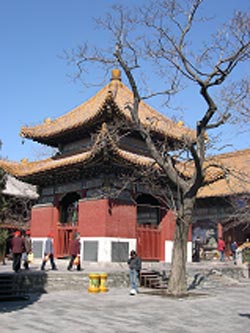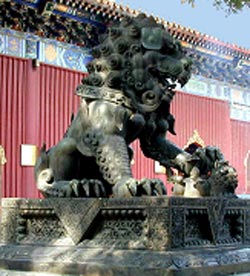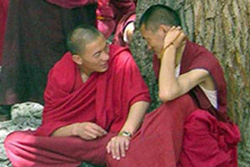
Explore! Yonghegong, Lama Temple This Tibetan Buddhist temple is Beijing's most visited religious site. Its five main halls and numerous galleries are hung with finely detailed thangkhas (painted cloth scrolls) and decorated with carved or cast Buddha images -- all guarded by young lamas (monks). Originally a palace for Prince Yongzheng, it was transformed into a temple after he became the Qing's third emperor in 1723. The temple flourished under Yongzheng's successor, Emperor Qianlong, housing some 500 resident monks. Unlike most "feudal" sites in Beijing, the Lama Temple survived the 1966-76 Cultural Revolution unscathed, thanks to the late Premier Zhou Enlai. Zhou Enlai is also credited with saving Lingyinsi Temple in Hangzhou! You'll walk past trinket stands with clattering wind chimes to reach the temple's five main halls. Each hall has a Buddha more spectacular than the last. In the courtyard beyond, a pond with a bronze mandala represents a Buddhist paradise.
 In the Hall of Harmony sit Buddhas of the Past, Present, and Future. You will note the exquisite silk thangkha of White Tara -- the embodiment of compassion -- hanging from the west wall. The Hall of Eternal Blessing contains images of the Medicine and Longevity Buddhas. Beyond, courtyard galleries display numerous statues depicting Tibetan deities and dharma guardians, some passionately entwined. A large statue of Tsong Khapa (1357-1419), founder of the Gelug order, sits in the Hall of the Wheel of Law. Resident monks practice here on low benches and cushions. A rare sand mandala is preserved under glass on the west side of the building.  The temple's tallest building, the Pavilion of Ten Thousand Fortunes (Wanfuge), houses a breathtaking 85-foot Maitreya Buddha carved from a single sandalwood block. White-and-gold blessing scarves drape the statue, which wears a massive string of prayer beads. While at the temple refrain from photographing any of the monks without their permission. There is no photography allowed of the interiors of the halls.
|

